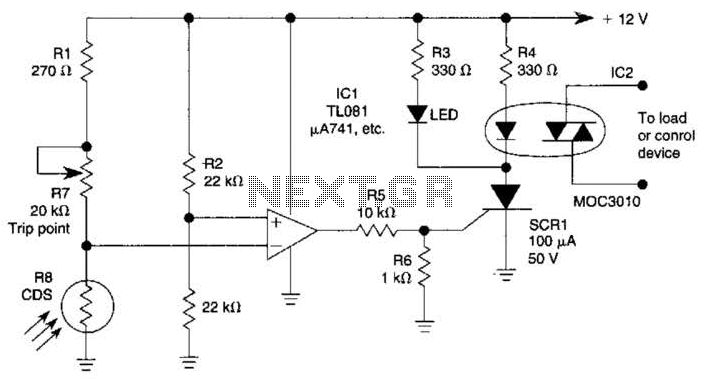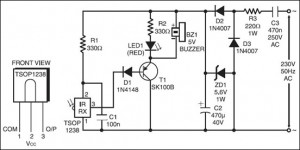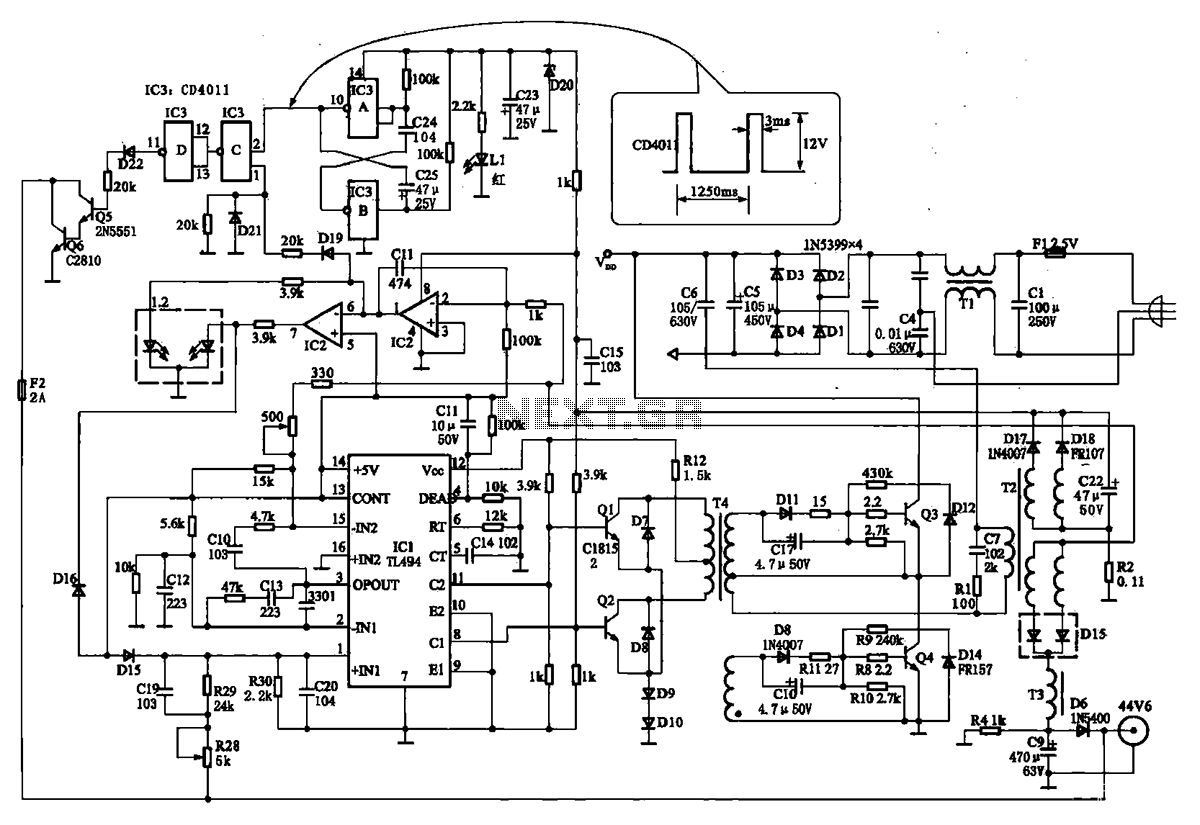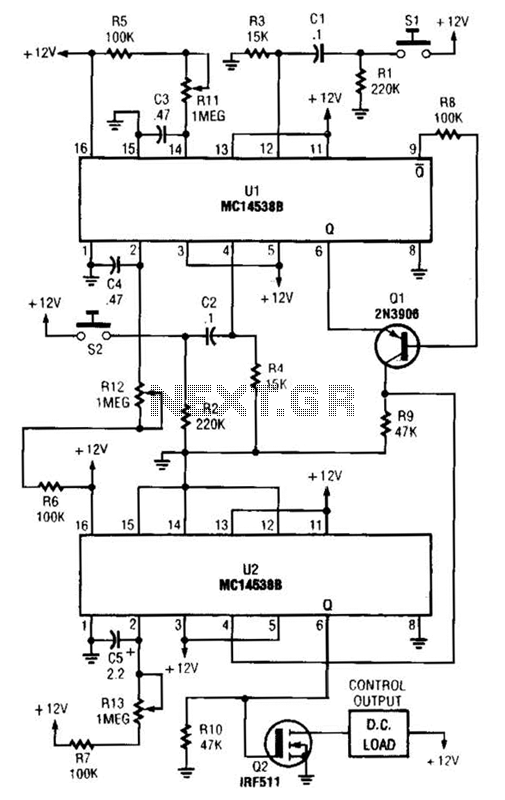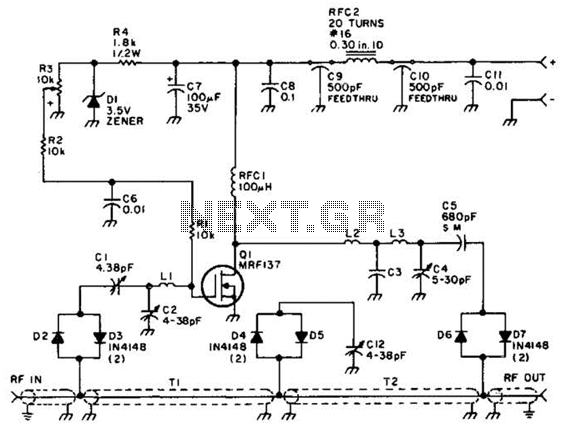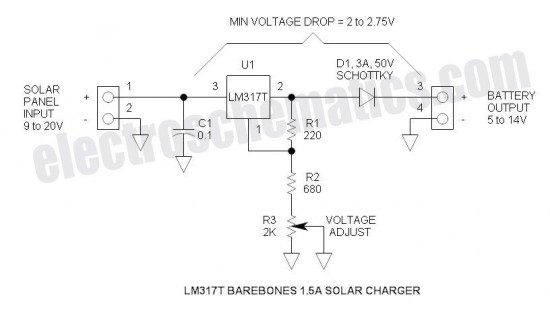
Ceramic Resonator Oscillator Circuit
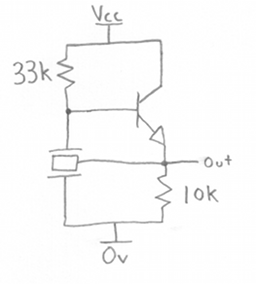
A ceramic resonator can be utilized to construct an oscillator. A single digital inverter can be employed to create a Pierce oscillator.
To design a Pierce oscillator using a ceramic resonator and a digital inverter, the following components and configurations are essential:
1. **Components**:
- **Ceramic Resonator**: This passive component provides the frequency stability and determines the oscillation frequency. The resonator should be selected based on the desired operating frequency.
- **Digital Inverter**: A single CMOS or TTL inverter, such as the 74HC04, will be used to create the oscillator circuit.
- **Capacitors**: Two capacitors (C1 and C2) are required, typically of equal value, to couple the resonator to the inverter and to set the gain and feedback necessary for oscillation.
- **Resistor (R)**: A resistor may be included in parallel with the inverter to help stabilize the oscillation and limit the current.
2. **Circuit Configuration**:
- Connect the output of the inverter to one terminal of the ceramic resonator.
- The other terminal of the resonator should be connected to ground.
- Place the two capacitors (C1 and C2) in series with the resonator, connecting one capacitor to the inverter input and the other to ground.
- Optionally, a resistor can be connected in parallel with the inverter to provide feedback stability.
3. **Operation**:
- When power is applied, the inverter will initially produce a low output, allowing the resonator and capacitors to charge. Once the voltage across the resonator reaches a certain threshold, the inverter output will switch high.
- This feedback mechanism creates a positive feedback loop, causing the inverter to toggle and generate a square wave output at the resonator's fundamental frequency.
- The frequency of oscillation can be adjusted by changing the values of the capacitors or selecting a resonator with a different frequency rating.
4. **Applications**:
- The Pierce oscillator is widely used in clock generation for microcontrollers, frequency synthesis, and other timing applications due to its simplicity and stability.
This configuration allows for a compact and efficient oscillator design suitable for various electronic applications. Proper attention to component selection and circuit layout will ensure optimal performance of the oscillator.I am looking to build a oscillator from a ceramic resonator. I know that a single digital inverter can be used to form a Pierce oscillator (hundreds.. 🔗 External reference
To design a Pierce oscillator using a ceramic resonator and a digital inverter, the following components and configurations are essential:
1. **Components**:
- **Ceramic Resonator**: This passive component provides the frequency stability and determines the oscillation frequency. The resonator should be selected based on the desired operating frequency.
- **Digital Inverter**: A single CMOS or TTL inverter, such as the 74HC04, will be used to create the oscillator circuit.
- **Capacitors**: Two capacitors (C1 and C2) are required, typically of equal value, to couple the resonator to the inverter and to set the gain and feedback necessary for oscillation.
- **Resistor (R)**: A resistor may be included in parallel with the inverter to help stabilize the oscillation and limit the current.
2. **Circuit Configuration**:
- Connect the output of the inverter to one terminal of the ceramic resonator.
- The other terminal of the resonator should be connected to ground.
- Place the two capacitors (C1 and C2) in series with the resonator, connecting one capacitor to the inverter input and the other to ground.
- Optionally, a resistor can be connected in parallel with the inverter to provide feedback stability.
3. **Operation**:
- When power is applied, the inverter will initially produce a low output, allowing the resonator and capacitors to charge. Once the voltage across the resonator reaches a certain threshold, the inverter output will switch high.
- This feedback mechanism creates a positive feedback loop, causing the inverter to toggle and generate a square wave output at the resonator's fundamental frequency.
- The frequency of oscillation can be adjusted by changing the values of the capacitors or selecting a resonator with a different frequency rating.
4. **Applications**:
- The Pierce oscillator is widely used in clock generation for microcontrollers, frequency synthesis, and other timing applications due to its simplicity and stability.
This configuration allows for a compact and efficient oscillator design suitable for various electronic applications. Proper attention to component selection and circuit layout will ensure optimal performance of the oscillator.I am looking to build a oscillator from a ceramic resonator. I know that a single digital inverter can be used to form a Pierce oscillator (hundreds.. 🔗 External reference
